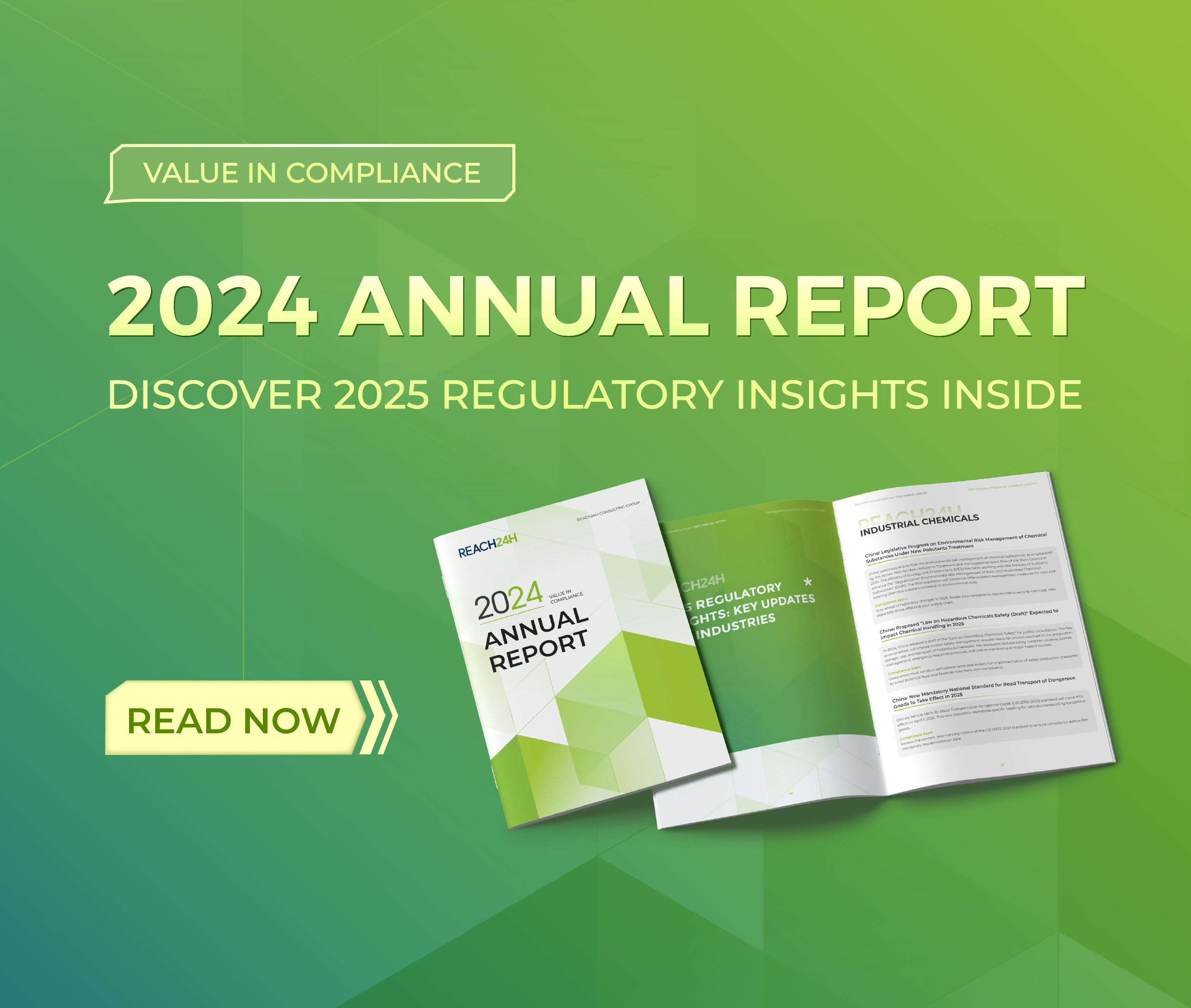2025 Regulatory Insights: Navigating Global Cosmetics Regulation
As 2025 begins, industries worldwide face a rapidly evolving regulatory landscape. Emerging trends, stricter compliance requirements, and new opportunities are redefining the global market, bringing both challenges and strategic possibilities for businesses.
Our “2025 Regulatory Insights” series offers an in-depth look at critical updates and practical strategies to help you navigate these changes with confidence.
-
China: Full Version of Cosmetic Safety Assessment Dossiers Required from May 1, 2025
Starting May 1, 2025, all cosmetic registrants and notifiers in China will be required to submit a full version of safety assessment dossiers in compliance with the Technical Guidelines for Cosmetics Safety Assessment (2021) and other relevant regulations during registration or notification applications.
-
China: 2025 Compliance Preparation for Simplified Notification of Toothpaste Products
For toothpaste products subject to simplified notification, notifiers must complete the following requirements before December 1, 2025:
- Notification Dossier Organization:
Products launched before January 1, 2021, may self-archive their notification materials; however, for products launched after this date, notifiers must submit complete materials via the notification platform. - Efficacy Claim Evidence Publication:
Except for toothpaste products claiming only cleansing effects, notifiers must upload and publish evidence supporting efficacy claims on the platform.
-
China: New Testing Methods for Cosmetics Effective July 1, 2025
Effective July 1, 2025, five new and replacement testing methods will be implemented for cosmetic registration, notification, and sample testing in China:
- New supplementary testing method: For azelaic acid and its salts, phenacetin, and hydroxycapric acid.
- Revision of testing method: For Asbestos, and glucuronic acid & 14 other ingredients.
-
EU: Multiple Substances to be Prohibited or Restricted in Cosmetics from 2025
- Nanomaterial Restrictions:
From February 1, 2025, cosmetics containing the following nanomaterials will no longer be allowed on the EU market:- Styrene/acrylates copolymer (and its sodium form)
- Copper, colloidal copper, colloidal silver, gold, colloidal gold, thioethylamino hyaluronic acid gold, acetyl heptapeptide-9 colloidal gold, platinum, colloidal platinum, acetyl tetrapeptide-17 colloidal platinum.
These substances must be removed from the market by November 1, 2025.
- 4-Methylbenzylidene Camphor: Prohibited from market placement from May 1, 2025, and from sale after May 1, 2026.
- Retinol and Derivatives (retinol, retinyl acetate, retinyl palmitate): Non-compliant products will be prohibited from market placement from November 1, 2025, and from sale after May 1, 2027.
- Triclocarban and Triclosan: Products on the market before December 31, 2024, that comply with the April 23, 2024, conditions can be sold until October 31, 2025.
- Homosalate: Non-compliant products will be prohibited from market placement starting January 1, 2025, and from sale by July 1, 2025.
- Other Restricted Substances (e.g., hydroxyapatite, genistein, daidzein, kojic acid, alpha-arbutin, arbutin): Products containing these substances will be prohibited from market placement from February 1, 2025, and from sale after November 1, 2025.
Compliance Alert:
Verify whether your cosmetic products for export to the EU contain any of these prohibited or restricted substances, and make the necessary adjustments before the deadlines to avoid trade disruptions.
-
EU: 21 CMR Substances to be Prohibited in Cosmetics from 2025
As part of the amendment to the EU CLP Regulation (EU 2024/197), 21 new Carcinogenic, Mutagenic, or Reprotoxic (CMR) substances will be banned in cosmetics starting September 1, 2025.
Compliance Alert:
Companies should review their product formulations and ensure compliance with the new CMR substance restrictions to avoid market access issues. For detailed substance information, please contact REACH24H at customer@reach24h.com.
-
USA: 2025 MoCRA Regulatory Updates
- FDA Proposed Rules on Asbestos Detection in Talc-Containing Cosmetics (Deadline: March 27, 2025):
On December 26, 2024, the FDA issued proposed rules outlining testing methods for detecting asbestos in talc-containing cosmetics. Companies are encouraged to submit comments by the deadline. - FDA MoCRA GMP Draft Delayed:
The release of the MoCRA Good Manufacturing Practices (GMP) draft has been postponed until October 2025. - Fragrance Allergen Disclosure Rule Delayed: The release of the fragrance allergen disclosure rule has been postponed until October 2025
- MoCRA Product Listing Requirements:
Companies must ensure timely annual updates of product listings in 2025, as part of the requirements under MoCRA.
How REACH24H Could Help
At REACH24H, we are committed to helping businesses navigate the complexities of global cosmetics regulations. Our team of experts provides tailored solutions, including:
- Regulatory Compliance Consulting: We offer in-depth consultations to ensure your products meet all regulatory requirements in key markets such as China, the EU, and the USA.
- Product Testing & Documentation Support: We assist in preparing safety dossiers, conducting necessary tests, and ensuring all documentation aligns with the latest standards.
- Market Access Strategies: Our experts help you stay ahead of the curve by keeping you informed of regulatory updates and identifying potential market opportunities.
- Training & Workshops: We provide customized training sessions to empower your team with the knowledge needed to meet compliance requirements efficiently.
By partnering with REACH24H, you can ensure that your cosmetic products are compliant with evolving regulations, mitigating risks and maximizing your market opportunities. Reach out to us today to stay ahead in the competitive global market.


